Chemicals to Avoid When You’re Pregnant or Breastfeeding
A guide to choosing the right products for baby and you.
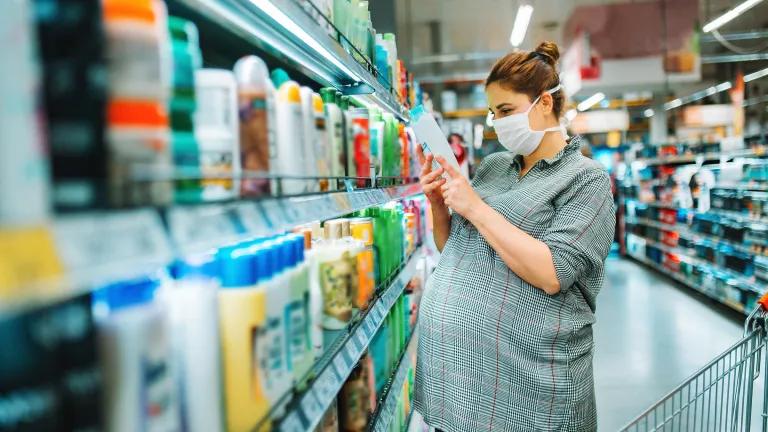
Getty
Coupled with the joy of becoming pregnant is the unfortunate realization that keeping your baby healthy means avoiding sushi, cold cuts, wine, and countless other delicious foods and beverages. But the “no list” doesn’t stop there. The daily skin-care products that expecting and breastfeeding mothers put on their bodies can be harmful to their babies too. “Unfortunately, there’s quite a bit to worry about,” says Miriam Rotkin-Ellman, a senior scientist in NRDC’s Health and Environment program who researches industrial air pollution, pesticides, and other toxic chemicals.
While health professionals can clearly explain the risks from eating raw fish (particularly those contaminated with mercury), they know less about the ingredients in makeup, perfumes, lotions, shampoos, and many other products we use every day. What’s more, the U.S. Food & Drug Administration (FDA) doesn’t regulate personal-care items. The agency’s website explicitly states: “Under the Federal Food, Drug, and Cosmetic Act (FD&C Act), cosmetic products and ingredients, other than color additives, do not need FDA approval before they go on the market.”
Instead, the FDA relies on the cosmetics industry to self-police within a set of laws that many—including members of Congress—consider severely outdated. This lack of oversight makes it even tougher for consumers to monitor what they are exposing themselves and their children to. Expectant and new mothers, especially, need to be careful because that adage “You are what you eat” can also apply to what you spray or slather on.
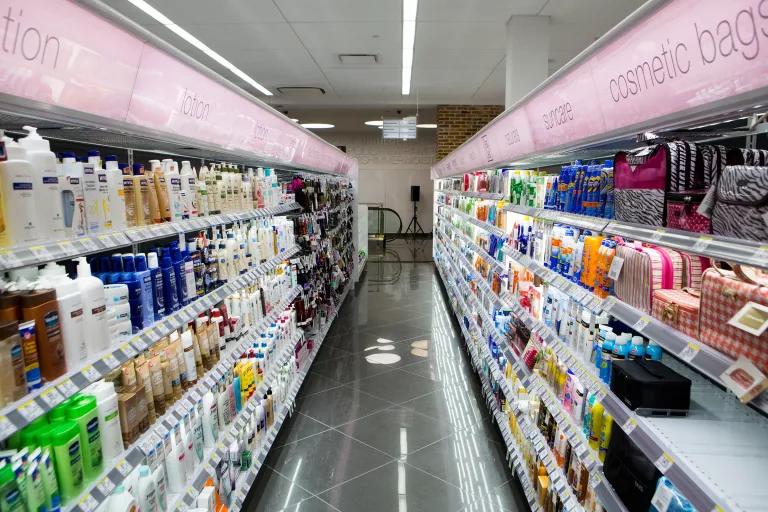
Lotion display at flagship Walgreens in Washington, D.C.
Kristoffer Tripplaar/Alamy
Skin care while pregnant and breastfeeding
Our skin provides a frontline defense against the bulk of chemicals we encounter every day, but some still sneak through. In fact, many lotions and cosmetics are engineered to work their way through layers of skin. Some could eventually get into the bloodstream and from there, reach the developing fetus or breast milk. “We don’t really know all of what’s in these products, but the fact that they are engineered to be absorbed into the skin on purpose makes us concerned,” says Jennifer Sass, a senior scientist on NRDC’s Health and Food team.
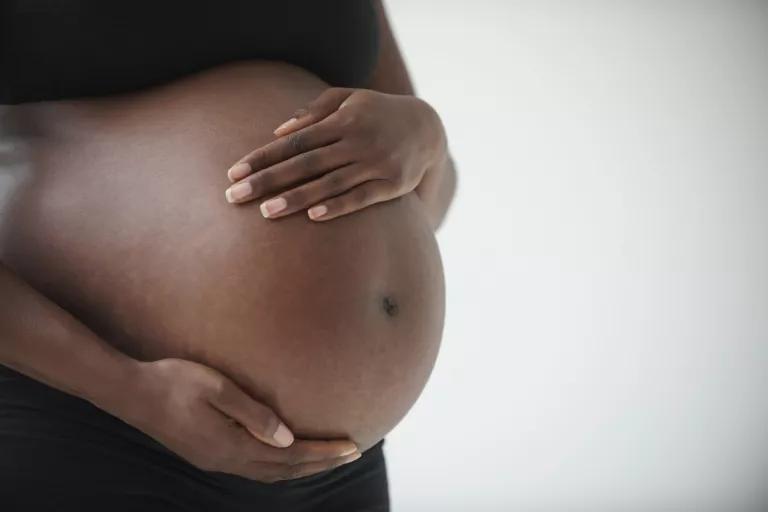
LWA/Dann Tardif/Blen
Babies in utero and newly out of the womb are growing critical systems, including the reproductive, immune, and nervous systems. Cells in the fetal brain, for instance, are busy forming vital connections and establishing the organ’s final architecture. Nutrients taken in by the mother nourish these various systems, but unfortunately, many unwanted chemicals can travel the same routes. “The fetus will be absorbing stuff it’s exposed to in its environment to make the building blocks of cells, bones, and anything else that grows,” Sass says. Researchers have, in fact, shown that chemicals used in personal-care products can wind up in umbilical cord blood and in infants.
Read between the labels.
To reduce your exposure to toxic chemicals from that tube of concealer or bottle of scented moisturizer, carefully read the ingredients. Switching to nontoxic beauty products has been shown to cut blood levels of certain harmful substances after just three days of use.
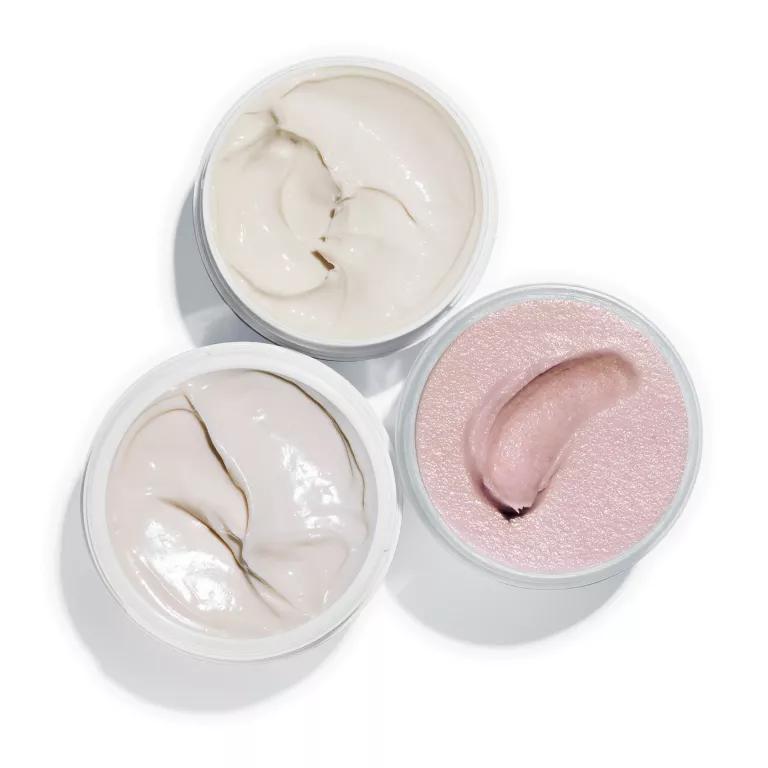
iStock
You can only control so much, though. Companies are not required by law to disclose the ingredients of perfumes, cosmetics, and lotions, so it’s impossible to know if the product label shows the full list.
Some common culprits to avoid
Parabens: These are antimicrobials used as preservatives to prevent bacteria and mold from growing in cosmetics. They mimic estrogen and have been found in tumors. Parabens can also damage DNA in sperm. On labels, you can spot the most common ones used in cosmetics. Here’s a list of parabens to avoid: butylparaben, ethylparaben, isobutyl paraben, isopropylparaben, methylparaben, and propylparaben.
Phthalates: This class of chemicals, typically found in nail polish and many cosmetics containing fragrance, can disrupt hormones and alter development in a growing baby. “The term fragrance hides many, many ingredients,” Sass says. The company selling the product may not know what the ingredient really is, either, since that “almond fragrance” may come from another manufacturer. Look for products marked “phthalate- free” or “unscented,” and avoid those that use generic terms for fragrance, such as “parfum.” (Phthalates are also commonly found in dish detergent and other household cleaners.)
Triclosan: Many antibacterial hand and body soaps contain this hormone disruptor, which is a pesticide. And here’s the thing: Washing with antibacterial soaps is no more effective than using regular soap and water to kill germs. After six years of litigation by NRDC, in 2016, the FDA banned companies from marketing antibacterial soaps that contain triclosan, among 18 other unsafe chemicals. But unfortunately, this ban excludes health-care antiseptics, hand sanitizers, and soaps used in food handling.
PFAS: This class of manmade chemicals—PFAS stands for per- and polyfluoroalkyl substances—is used in cosmetics, as well as in nonstick cookware, food packaging, clothing, and carpets to make these consumer goods water-, stain-, and grease-resistant. PFAS are toxic at extremely low amounts. They have now been linked to a wide range of health risks in both human and animal studies—including cancer (kidney and testicular), hormone disruption, liver and thyroid problems, and interference with vaccine uptake. They have also been shown to cause lower fertility in women and harm to developing fetuses, infants, and children.
Almost everyone in the United States has been exposed to PFAS and carries these chemicals in their bodies. Sadly, fetuses and infants are not exempt. Fetuses can be exposed during pregnancy through placental transfer. Infants can ingest contaminated breast milk or infant formula contaminated by food packaging or drinking water. They can also be exposed to PFAS-containing clothing, carpets, and other items they may put in their mouths. NRDC is advocating for the cleanup, phaseout, and ban of PFAS as the best means of protecting human bodies, big and small.
Beware of “natural”
Don’t believe words like natural and green, Sass says. “These words sound nice but don’t come with any guarantees.” Just because an ingredient is plant-based doesn't necessarily mean it won’t be toxic. Think about mushrooms: some are edible and some make us sick, or worse. Lead, mercury, and asbestos all come from nature, and have all at one time been used in common household products—including cosmetics.
Shop with confidence by looking for a government-guaranteed label, like the EPA “Safer Choice” logo, on many household products, to know whether they are truly safer choices. For cosmetics and personal-care products, check out the Environmental Working Group’s Skin Deep cosmetics database, or browse products that have been screened by the Made Safe toxicant database.
Spray with caution.
In the regulatory world, chemical-based insect repellents are considered pesticides—part of the U.S. Environmental Protection Agency’s turf—so they must be labeled as such. Use these with caution. “If you’re not in a malaria hot spot or headed to a bug-infested place, you likely don’t need hard-core repellents,” Rotkin-Ellman says. Read the bug-repellent guide offered by the EPA, and look for the EPA Design for the Environment (DfE) logo, to get the government guarantee of a safer product. Even better: If you cover up with long pants and sleeves, you won’t need to use as much product.
It’s also best to use lotions or wipes instead of spray-on versions of repellents—or spray-on versions of sunscreen, for that matter (particularly those containing benzene). Consumer Reports has warned against the use of sunscreen sprays on children due to the risk of inhalation. So stay away from those chemical-dispersing nozzles. “When you breathe something in, the lungs’ job is to get everything in the air right into the bloodstream and send it to organs in every part of your body,” Sass says. That’s good when it comes to oxygen, but not when it comes to sunscreens and pesticide-containing bug repellents. Whether avoiding bugs or the sun’s rays, the safest thing for your baby’s sensitive skin is protective clothing and limiting exposure when possible.
Speak up
There are, of course, bigger safety measures that pregnant and breastfeeding mothers can take beyond what goes into the shopping cart. Ask your favorite cosmetics companies and cleaning product manufacturers to make their products safe and their ingredient lists transparent, and stand with organizations like NRDC that are pushing for policies that put public health first.
“It's going to take collective action to really protect our bodies and our children from these kinds of chemicals and to make sure the products on the market are safe,” Rotkin-Ellman says.
This story was originally published on February 1, 2017, and has been updated with new information and links.
This NRDC.org story is available for online republication by news media outlets or nonprofits under these conditions: The writer(s) must be credited with a byline; you must note prominently that the story was originally published by NRDC.org and link to the original; the story cannot be edited (beyond simple things such as grammar); you can’t resell the story in any form or grant republishing rights to other outlets; you can’t republish our material wholesale or automatically—you need to select stories individually; you can’t republish the photos or graphics on our site without specific permission; you should drop us a note to let us know when you’ve used one of our stories.
Millions of Americans drink tap water served by toxic lead pipes.
Tell the EPA we need safe drinking water!
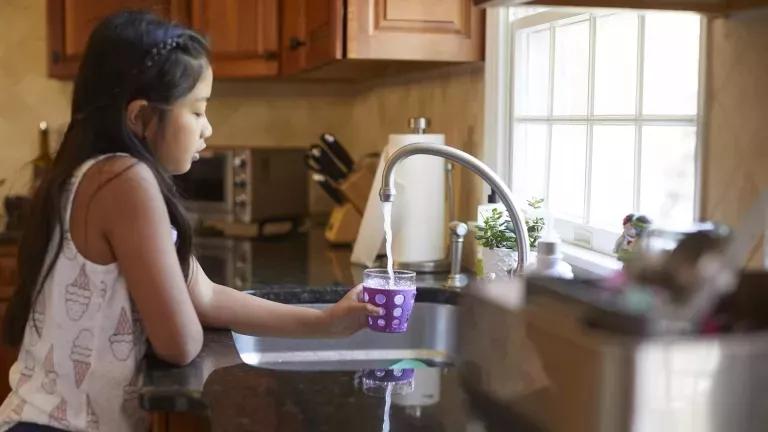
Tell the EPA we need safe drinking water!
There is no safe level of lead exposure. But millions of old lead pipes contaminate drinking water in homes in every state across the country. We need the EPA to do its part to replace lead pipes equitably and quickly.

“Forever Chemicals” Called PFAS Show Up in Your Food, Clothes, and Home
The Particulars of PM 2.5
Mercury’s Journey from Coal-Burning Power Plants to Your Plate